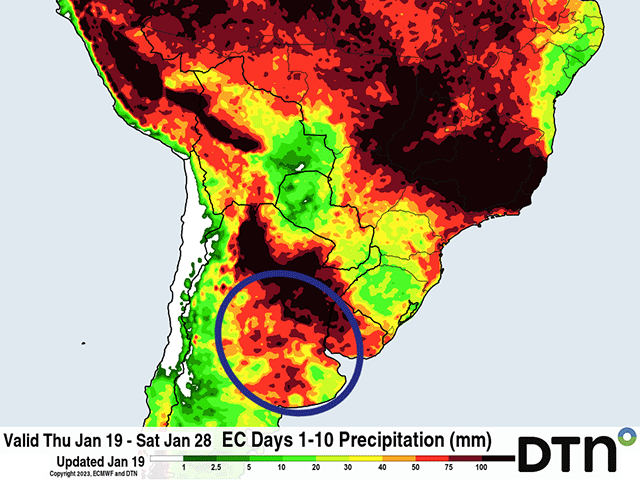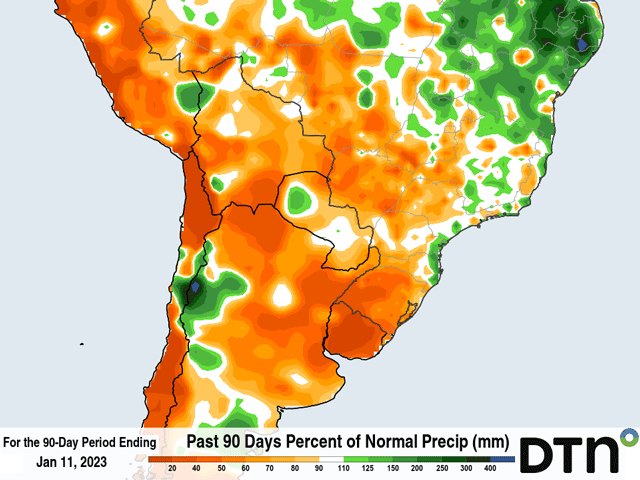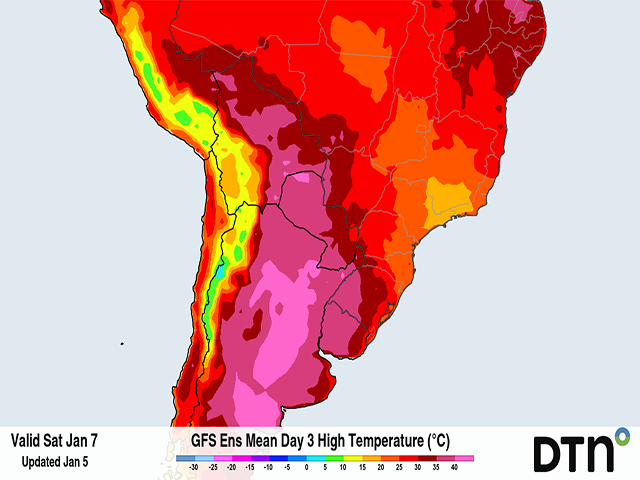
A series of three cold fronts will move through Argentina through Jan. 28. Models are keen on producing widespread precipitation with each front. But will the rain work out as forecast and are crops too far gone to benefit?

A series of three cold fronts will move through Argentina through Jan. 28. Models are keen on producing widespread precipitation with each front. But will the rain work out as forecast and are crops too far gone to benefit?

Recent production estimates by the USDA, Rosario Grain Exchange, and Buenos Aires Grain Exchange all point to the effect of poor weather conditions in Argentina, the world's third-largest producer of soybeans, and fourth-largest producer of corn.

Temperatures across Argentina will rise during the next several days, pushing 40 degrees Celsius (more than 100 degrees Fahrenheit). With soils very dry and crops already in poor condition, the heat will continue to wilt the nation's corn and soybeans.
DIM[2x3] LBL[blogs-south-america-calling-list] SEL[[data-native-ad-target=articleList]] IDX[2] TMPL[news] T[]
DIM[2x3] LBL[blogs-sourth-america-calling-list-2] SEL[[data-native-ad-target=articleList]] IDX[5] TMPL[news] T[]